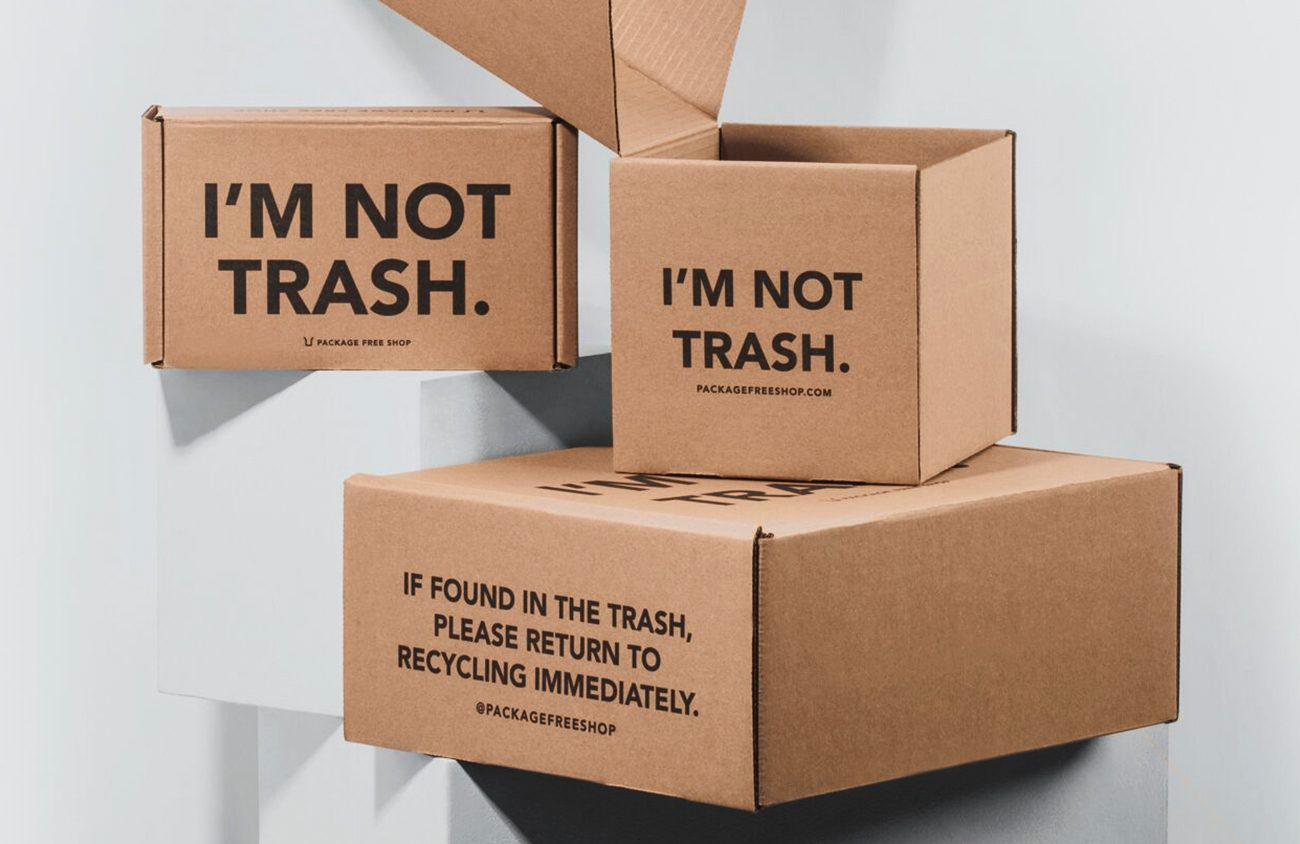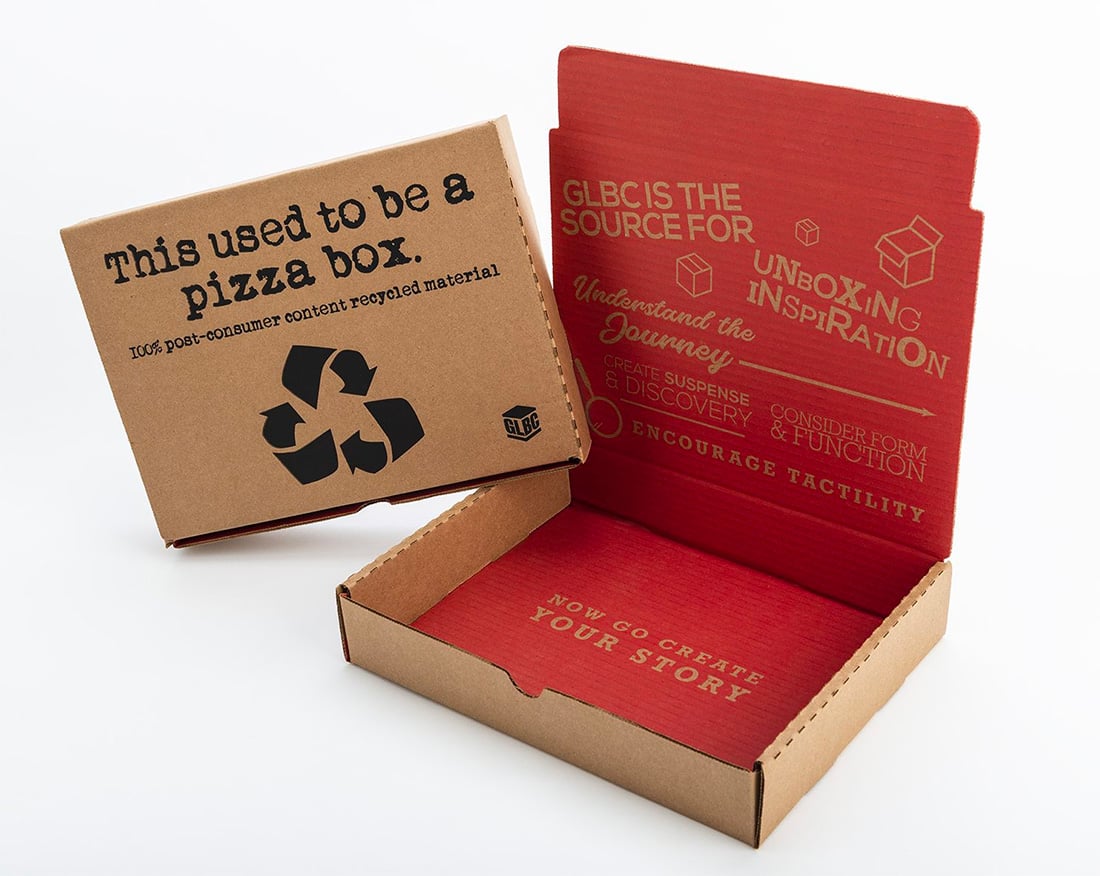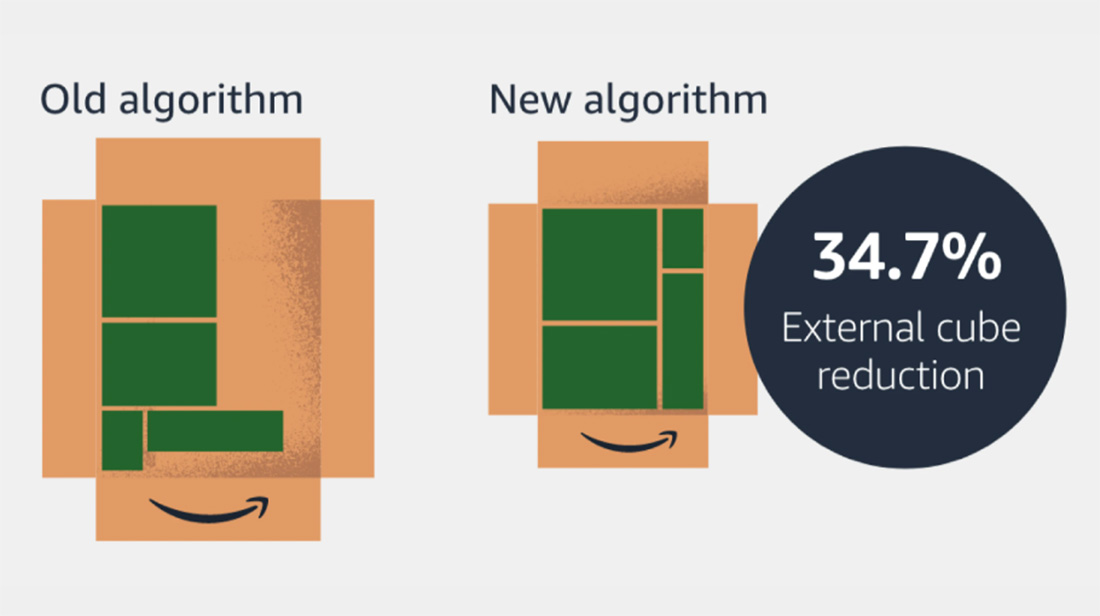

Have you noticed that more of your packages may be arriving in eco-friendly envelopes rather than boxes? Or that some packages explain that they are compostable or contain less waste than in the past?
There’s a large movement to create, design, and use more sustainable packaging for everything from shipping to consumer goods. If you haven’t been asked to design one of the products yet, it is likely that you might get one soon.
But how do you do it? What are the best practices for designing more sustainable packaging? Let’s explore this design technique.

Designing sustainable packaging is essential to reduce waste, preserve resources, and mitigate the impact of packaging on the environment.
There are two elements to this type of design work:
Physical and structural designGraphic design and communication
We’ll look briefly at physical and structural design, but the focus here will mostly center on the graphic design considerations that come with sustainable projects.

When it comes to physical packaging, there are a few things to think about in terms of sustainability. As a designer, some of these elements are often beyond your control and may already be determined before the project hits your desk.
These considerations include:
Reducing material usage to the minimum amount of material necessary to provide adequate protection to the product. Avoid over-packaging or using unnecessary layers, coatings, or embellishments. Choosing sustainable materials, including renewable, biodegradable, or recyclable materials such as paper, cardboard, or bioplastics. Avoid using materials that are difficult to recycle or degrade, such as plastic or Styrofoam. Use lightweight and compact packaging that reduces the need for energy-intensive transportation and storage.Using eco-friendly inks and adhesives that are non-toxic. Avoid using inks or adhesives that contain heavy metals or other harmful substances. Making packaging reusable, such as containers that can be refilled or repurposed. Packing and shipping with efficiency to put as much in a single container and fill it as possible, rather than packages with open space inside.Optimizing packaging design to reduce the carbon footprint of transportation and storage. Use lightweight and compact packaging that reduces the need for energy-intensive transportation and storage.
Looking for more ideas on the actual packaging and materials? Bennett Packaging and Packaging Digest have good lists to help you make those choices.

When it comes to graphic design for sustainability, there are quite a few things you can do as well. Generally, at the core of sustainability is communication.
It’s important to communicate the sustainability of the packaging to the customer. Use labels or other information to inform the customer about the eco-friendliness of the packaging and how to dispose of it properly. Part of what makes a sustainability mission work is sharing it with others and making them aware of how to contribute as well.
Other graphic design considerations for working with sustainable projects include:
Less design on the actual packaging. Reduce potential waste with less design on containers and boxes and use plain packages with designed tape or stickers. This can ensure that packaging materials don’t get dated and thrown away.Design more neutral or natural elements that match the feel of sustainable messaging. This might include a design on more natural surfaces and less gloss or embossed elements.Consider ways printed elements can do double duty to design with less of a carbon footprint. That might include sending postcards rather than invitations inside envelopes, not using a bleed (ink reduction), or choosing standard print sizes with less paper cut and waste. Use best practices for web graphics and images. Smaller file sizes use less energy to render on screens!Consider modularity and design elements that you can use and repeat for multiple instances. Use the same image for a website, social media, and print promotion to make the most of work rather than create duplication and replication. Less printing means less impact. Future-proof designs as much as possible. Anything with specific dates or references can lead to waste if not fully used before the deadline.Optimize for eco-friendly printing. This might mean you have to think about colors and how much ink you use carefully so that the design still looks good and prints legibly.

A big part of designing for sustainability is communicating that corporate mission. Why is it important to your company or brand? What can a customer do with these materials to contribute to sustainability on their own?
For designers, this often includes creating a design boilerplate with this information that becomes part of all packaging design. It might be a sticker, label, or printed on the package itself.
These best of these elements are not an afterthought and include the same design finesse as the rest of the package. It should have the same voice and branding as the rest of the design so that people will actually take note and not think the sustainable message is just a disclaimer of sorts.
Amazon is actually doing a good job of this – you’ve probably noted it on some packages and explains it even further on their sustainability page:
“Machine learning helps us determine which smaller products are suitable for flexible packaging, such as padded mailers and bags, which are up to 75% lighter than similar-sized boxes. Over the past five years, these algorithms have reduced the use of corrugate boxes by over 35%.”
Designing more sustainable packaging can be a creative exercise, but more importantly, it is one that’s good for the planet’s future. Start with small steps today to implement some best practices that won’t necessarily change how your projects look but can have less impact on the ecosystem.
And don’t forget to communicate it. Consumers like to know what you are doing for the planet and how they can use and reuse the packaging materials you design for them.
By: Carrie Cousins
Title: How to Design More Sustainable Packaging
Sourced From: designshack.net/articles/business-articles/how-to-design-more-sustainable-packaging/
Published Date: Thu, 16 Mar 2023 15:00:30 +0000
Did you miss our previous article…
https://www.webdesignhawks.com/?p=23609